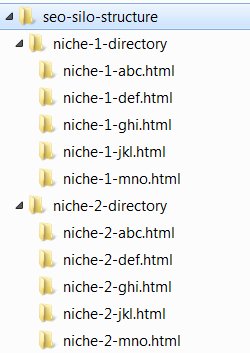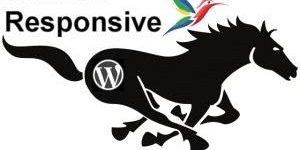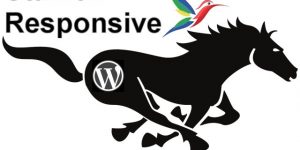Comment on SEO Silo Theme by SEO Dave.

Every WordPress Post and WordPress Page can override SOME main Stallion Responsive options.
Go edit a Post and look under the “Stallion Layout and Colour Scheme Options” box.
You can see there you can set
Sidebar Layout
Colour Scheme
Original Header
2011 Header Set
Top Banners
Disable All Ads
Using those settings you can set a different layout, colour scheme, header image etc… without any theme editing.
The above covers some of what you’ve asked about, this is for WordPress Posts and WordPress Pages, doesn’t cover categories or tags output.
You could have 10 WordPress Pages or Posts and set a different layout, colour scheme and header image for each. Since there’s 12 Stallion layouts and 40 Stallion Colour Schemes without any customization you can use any combination of the above on any WordPress Page or WordPress Post now.
There’s an advanced feature for using different templates for different parts of a site, with a fair amount of PHP customization you could build a category template that uses a particular layout and colour scheme (not built one, so don’t have an example).
Under “Stallion Theme” >> “Layout Options” turn “Custom Templates ON” which will add a new options page under “Appearance” >> “Category Templates”.
Here you can set entire categories to use a particular Page Template and/or set categories to use a category template.
This feature takes WordPress core to a new level. With WordPress core the custom template system only works with Static Pages, with Stallion Responsive it works with Static Pages, WordPress Posts (posts can use the page templates**) and Categories.
** WordPress core isn’t designed to allow different templates for posts, only static pages. I guess they worked on the principle webmasters would not want to have a different look for blog posts!
I’ve not built many category templates, but have built a number of page templates.
To expand Stallion/WordPress further you can build your own, but it’s not something I’ll cover via support here to a high level because it involves advanced PHP modification. Unless you understand PHP or mind a lot of testing to see how it works (that’s how I learnt PHP :-)) it’s not a case of make this minor edit and it works. It’s creating new php files, adding/removing PHP code to add/remove features.
For example I built a “Static Page Blank Sales No Sidebars” template (file: page-sales.php) which ignores which ever layout options set and always uses the full width layout (no sidebars: actually stripped the sidebar code out of the template) and is for building a home page that uses little of the Stallion CSS.
I couldn’t explain how to create this file in a comment, you need to understand some PHP to build custom templates and unless I think the template is useful to me or a lot of people I don’t create them.
Compare page-sales.php to page-example.php (this is what static pages normally look like) to see how different they are code wise. To use the full width layout all the time had to add the entire header.php template file and modify it.
There’s an example category and page template for starting with:
page-example.php – For Posts and Pages.
category-example.php – For categories.
Starting point would be make a copy of one of them, rename and edit as needed.
David


More Comments by SEO Dave
Silo Links
How Much Duplicate Content is SEO Safe?
In a perfect SEO world ALL your content would be unique, but as we all know generating unique content takes TIME and EFFORT, makes taking shortcuts tempting.
If you decide to take shortcuts and use duplicate content the question then is …
Continue Reading Link Silo
Silo Links
Google Double SERPs
I think you are mixing up how/why Google shows multiple webpages from one domain for some SERPs.
That’s nothing to do with silo SEO or WordPress Static Pages, that’s having multiple webpages on a domain with content that ranks high for …
Continue Reading Link Silo
Silo Links
Shameless Self SEO Promotion
Thanks for noticing my shameless self promotion tactics for the best SEO design framework for WordPress.
I’m not attempting to be subtle in my promotion tactics (some of it is cringe worthy), I want to irritate other WordPress SEO developers like …
Continue Reading Link Silo
Silo Links
Autoblogging and SEO
Be very careful with autoblogging, if Google determines your domain is an autoblog it will be downgraded. It’s not IF Google catches you out for autoblogging, it’s WHEN. I’ve been testing autoblogging/thin content for over a decade and Google always …
Continue Reading Link Silo
Silo Links
SEO Data Transporter Plugin
Search Google for “WordPress SEO Data Transporter” and you find multiple WordPress plugins for changing SEO data formats.
There’s a lot of WordPress SEO plugins and they tend to use a different database format (how the SEO data is stored), the …
Continue Reading Link Silo
Silo Links
On-Site SEO vs Off-Site SEO
As an SEO theme developer I assume you understand off-page SEO is far more important than on-page/on-site SEO and an SEO products role is fully utilizing/protecting the hard earned off-site SEO a webmaster has built?
SEO experts (should) understand that though …
Continue Reading Link Silo
Silo Links
SEO Design Framework
Guess you aren’t happy a simple search engine optimized comment is top 10 in Google for some of your SERPs like SEO Design Framework and SEO Design Framework Review.
I never said I used your SEO Design Framework theme, thought I …
Continue Reading Link Silo
Silo Links
Using Image SEO to Support WebSearch SEO
Google doesn’t have a problem with adult images, as an SEO factor images are really important for websearch results due to the image names and alt text (both SEO metrics).
Now you are a Stallion Responsive user happy to give you …
Continue Reading Link Silo
Silo Links
Silo SEO Over Optimization
If it’s the domain you use as your email address which is a site targeting Shemale and LadyBoy SERPs I took a look.
I cut my SEO teeth on adult websites (almost 15 years ago), my first online business was selling …
Continue Reading Link Silo
Silo Links
Understanding WordPress Templates
You’ve completely misunderstood how Stallion Responsive works (how WordPress Themes work).
To simplify the main Stallion output what we see in a browser) is controlled by the php files.
header.php is the header part of the page
content (different PHP file for each …
Continue Reading Link Silo
Silo Links
WordPress Install in a Directory
You’ve misunderstood page templates.
Page templates are literally for a single WordPress page, not a section of a site. A section of a site includes a main entry point (a category for example) and multiple WordPress Posts or WordPress Pages, could …
Continue Reading Link Silo
Silo Links
WordPress Widgets Anywhere Tutorial
Added the Widgets Anywhere feature to Stallion Responsive 8.1 and not wrote a tutorial per se yet, but there’s full instructions on the Widgets Anywhere options page “Stallion theme” >> “Widgets Anywhere”, so wouldn’t be adding much to that information.
This …
Continue Reading Link Silo